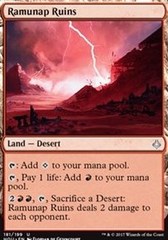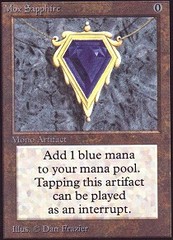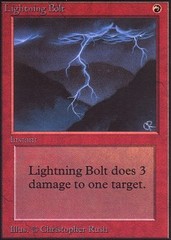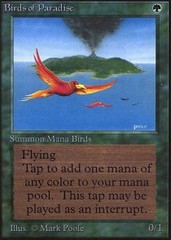Resource Management: Mind Your Mana, Part 2

Welcome back to Resource Management, my series examining the various resources available to you as a Magic player and how you can use them. In my last article, we looked at mana as a resource – how to utilise it efficiently, what to do when you have it in abundance or in shortage, and how to increase your win percentage when poor luck hits and you’re facing flood or screw. If you’d like to catch up, check out part one
Today, we’re going to be looking at ways to smooth out your mana – hitting your land drops early and utilising your extra mana late. After that, we’ll look at fast mana, and decks dedicated to breaking the one-land-per-turn rule by generating tons of the stuff!
Mana Consistency
One of the biggest keys to mana consistency is card filtering; seeing more cards and having control over which you have access to. This is a great way of seeing lands early and spells late, so let’s dive into ways you can make this happen.
Explore
First up, we have the Explore mechanic from Ixalan. This one is pretty straight-forward – when a creature Explores, you either draw a land or get one card closer to a land drop. It’s easy to see that this helps when you need lands, but it also helps late in the game; if you just need spells and your Explore creature finds you a land, it’s effectively gotten you one card closer to action!
While there are no constructed standouts sporting the mechanic at present aside from Seeker’s Squire making some versions of God-Pharaoh’s Gift, keep an eye on this one – a cheap creature with ‘trigger: explore’ in Rivals of Ixalan could easily be the next Standard Tireless Tracker.

Cantrips
‘Cantrips’ are cards that replace themselves with a new card. These can be attached to creatures like Wall of Omens or Rogue Refiner, attached to spells such as Electrolyze, or offer minor filtering effects as in Serum Visions or Anticipate.
Cantrips pull double duty with mana concerns – they assist with mana screw and flood by virtue of letting you see extra cards, but they also help in deckbuilding. A deck with a lot of cantrips can easily shave a couple of lands, as the cantrips will help find lands when required. In eternal formats like Legacy and Vintage – Brainstorm formats – land counts are often at the twenty or under mark!
Cycling
The mechanic recently reintroduced in Amonkhet is a friend to smooth draws the world over. Cycling spells like Cast Out provide a powerful ability at a slightly elevated cost, but give all the flexibility of cantrips when you just need a land.
The cycling lands work somewhat in reverse to cantrips during deckbuilding – they allow decks to play more lands than they usually would (preventing screw), but can be cycled away when they’re of no help (preventing flood).

On this note, let’s look at other ways to increase the lands in your deck without drowning in mana:
Creaturelands
The Creaturelands (Hissing Quagmire, Raging Ravine etc) are powerful tools when it comes to mana consistency. Like cycling lands, they allow for a slightly elevated land count during deckbuilding, however they don’t present the same quandry as do the cyclers. If you need mana early and you put a cycling land into play, it cannot be used if you find yourself flooding later (ignoring Magical-Christmas-Land scenarios with Kefnet the Mindful).
Creaturelands provide a repeatable and powerful place to put extra mana at any time after entering the battlefield, and just by having them in play your opponent has to respect them. Tapping out for a Chandra, Torch of Defiance to kill your opponents’ threat on an otherwise empty board is a much less exciting proposition if their Needle Spires can immediately fire up to take her down!
Creaturelands provide a mana sink – which leads neatly onto our next topic…
Mana Sinks
Mana sinks are places to use excess mana/lands you’d otherwise have no use for. Mana sinks are commonplace across numerous constructed formats, but let’s take a peek at Ramunap Red in Standard for an example of what I mean.
Ramunap Red is a traditional aggro deck. It has a low curve, cheap creatures, and only a handful of cards costing more than two mana. The lynchpin of the deck is the hasty god herself, Hazoret the Fervent.
While it’s important to hit Hazoret on-curve, a red deck with no mana sinks would likely play between twenty to twenty-two lands. As a high impact play, Hazoret is powerful whenever she’s cast. Mitigating the risk of flooding out would be worth the loss of consistency of a turn four attacking God. The usual Ramunap Red build that you’ll see plays twenty-four lands, however, and that’s because of these three:



Khenra, Hazoret, and Ruins all give the red deck a place to use its mana going into the late game. At six mana, the Khenra reanimates bloodlustier than ever. Hazoret lets you throw excess cards at the opponents’ face, and the Ruins turns all your excess deserts into Shocks.
Because of these mana sinks, Ramunap Red can comfortably play a higher land count, maximising its chances to find those first four lands while still being able to compete in a mid-long game.
So, we’ve looked at ways to keep the mana flowing when you need it, and to shut off the tap when you don’t. What about strategies looking to ignore the card advantage court and instead focus on mana advantage?
Mana Advantage
Mana advantage is all about getting access to more mana than your opponent. This can be done in several ways.
Fast Mana
You’ve probably seen a few of these before:


At first glance, many new players underestimate these cards. Lands already produce mana – why would you need your spells to do that too?
The reason is simple – fast mana. Imagine a game in which you start things off by playing both of the above moxes, a land, and put a Jace Beleren on the table. On turn one. Doesn’t seem fair, does it?
Magic is designed around its land system – one land per turn, with spells increasing in power level each turn. Fast mana effectively breaks this system, allowing powerful spells to come down long before they’re due. It’s for this reason that the moxen are banned even in Legacy, and are quite rightfully regarded as some of the most powerful cards ever printed.
Fast mana doesn’t need to be quite so absurd to see play. Mana dorks, or creatures that produce mana, are mainstays in many constructed decks. Birds of Paradise, Llanowar Elves, Servant of the Conduit – all dorks, all powerful. Mana rocks – artifacts that produce mana – are generally too strong for Standard at a cost of two or less (as they are so difficult to interact with) but are key in Cube and older formats. Many a Cube pack one pick one will have been started with something like this:

In the modern Magic era, mana rocks have been phased out, as mana ramp (generating large quantities of mana quickly) has traditionally been Green’s deal. Speaking of…
Dedicated Ramp
Dedicated Ramp decks are all about giving up on several aspects of the game – card advantage, life advantage, tempo – in exchange for playing something very big, very quick. Typically, these decks will play only three types of nonland cards: mana ramp, such as mana dorks and mana rocks; big mana payoffs, such as the Eldrazi or gigantic Planeswalkers; and some minimal interaction or card draw.
Ramp decks are often very single minded, and don’t really have much of a plan B – if they don’t effectively ramp their mana, they cannot cast their giant threats. If their giant threats are discarded, countered, or otherwise dealt with, they can find themselves with nothing left but more mana ramp. Because of this weakness, ramp decks tend to focus very heavily on plan A: if you aren’t making mana or using tons of it, you’re not worth the card you’re printed on in a ramp deck.
Mana Denial
The yang to Fast Mana’s ying, mana denial is all about robbing your opponent of the ability to cast their spells. While direct land destruction is very rare in modern Magic, this is still an important skill to recognise.
Servant of the Conduit is a key piece in various Standard Energy variants. The reason for this is obvious – access to four mana on turn three allows for some devastating plays. An early Chandra, Torch of Defiance or Bristling Hydra is no joke. Given that, when the opponent plays a dork on turn two, kill it. It will occasionally be correct to make other plays, but as a heuristic?
Always

the

Control
Control decks generally try to win long games utilising card advantage, and mana doesn’t much enter into the picture. The exception to this? Traditional control mirrors.
When two blue control decks face off against each other, often neither player will cast a spell that affects the board for the first ten or more turns of the game. As control mirrors will usually come down to a big counterspell war at some point, mana advantage becomes a way of one-upping your opponent. If you each have seven counterspells, the onus isn’t on card advantage but mana advantage. If you’ve nine mana available and your opponent only six, you are in a great position to be able to stick your Jace Beleren and run away with the game.
Remember this the next time you find yourself in a control mirror; every land drop is precious, even the fifteenth and sixteenth!

Summary
And that’s mana! After looking at mana consistency and mana advantage, you should now have a pretty rounded-view of the important role mana plays in our great game, and recognise the different ways you can use it to your own benefit… or the opponent’s detriment.
Next up, I’ll be looking at the graveyard (and mistiming my articles horribly. Sorry, Halloween). In the meantime and as always, if you have any questions or ideas, please leave them in the comments below. Good luck!





